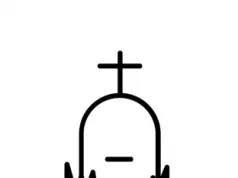Psychoanalytical Psychotherapy and Psychodynamic Psychotherapy are two very similar, albeit different, types of talking therapy. They are very popular, and have helped many people to improve their mental health.
While they are very similar, there are some differences to them, as discussed in this article. These intricate differences can be helpful if you are considering using any of these therapies.

Definitions
Psychoanalytical Psychotherapy: Psychoanalytical Psychotherapy is a talking therapy that aims to help uncover and resolve unconscious beliefs that cause psychiatric conditions. Traumatic experiences that may or may not be buried in the unconscious mind can be highlighted and processed. Psychoanalytical psychotherapy involves talking to a trained therapist. The therapist can show the individual how early memories and past traumas have affected their thinking, behaviour and attitude in the modern day. Psychoanalytical psychotherapy is especially useful for any condition that involves past trauma. Renowned neurologist Sigmund Freud developed this therapy, which is typically completed over a long-term basis.
Psychodynamic Psychotherapy: Psychodynamic Psychotherapy is a talking therapy that is closely related to Psychoanalytical psychotherapy, though combines more areas into the therapy process. This talking therapy aims to bring to light thoughts and memories in the unconscious mind. It works on the idea that past trauma is pushed to the back of the mind, with the conscious mind neglecting to process them. This may cause long-term problems though, when a person develops defence mechanisms to cope with the issues. This tends to be a shorter-term therapy than others.
Similarities
For the most part, these therapies are very similar. To begin with, both types of therapy draw on the use of Sigmund Freud’s theory of Psychoanalysis. Freud’s theory was instrumental in the development of these two types of therapy.
Psychoanalysis is a body of theories which relate to the unconscious mind – which is the part of the mind that a person is unaware of, where memories of past experiences and traumas are hidden, yet continue to affect a person’s mood, thoughts and feelings to the present day.
Psychoanalysis revolves around the idea that a person’s unconscious mind influences a person hugely – and is able to explain many emotional disturbances. Therefore, both are based on the same premise.
Both have showed promise in treating many different mental health conditions. These include Depression, Anxiety, trauma-based conditions, Substance-related disorders and more. They are both known to be capable of helping many people.
The techniques used – like free word association, dream analysis and Freudian slips are similar. Moreover, ideas revolving around Freud’s theory of the id, superego and ego – all underpin these types of therapy.
Key Differences
One of the main differences is the length of therapy [1]. Those who use Psychodynamic Psychotherapy tend to do so just for a few months. This is therefore reflected in the approach by therapists.
The longer duration of Psychoanalytical Psychotherapy means that therapists can go into greater detail in learning about their patient, and take more time in getting to know them. Meanwhile, therapists doing Psychodynamic Psychotherapy will often speed up the initial process of getting to know their patient.
This may make some people think that Psychodynamic Psychotherapy is “inferior” – but this isn’t true. It still provides patients with a thorough therapeutic experience, and combines other areas too.
But the difference in length does bring about one of the important differences – depth. As mentioned, due to the shorter nature of Psychodynamic Psychotherapy – the therapist won’t be able to go into the same depth as they would if they were completing Psychoanalytical Psychotherapy.
That brings us onto another difference – concerning which conditions and circumstances are suitable for each type. For those with deep-seated traumas that have affected them enormously, then they may need those extra sessions – which makes Psychoanalytical Psychotherapy better for them.
It is not unusual for someone doing Psychoanalytical Psychotherapy to lay on a couch during therapy sessions. However, this is rare for Psychodynamic Psychotherapy sessions – instead a usual two-chair approach is normally used.
In some territories and accrediting organisations, like the British Psychoanalytic Council, therapists need to complete different training courses to become qualified in the specific areas. While this isn’t always the case, many organisations do ensure this.
Summary
Without doubt, there are many similarities between Psychoanalytical Psychotherapy and Psychodynamic Psychotherapy. Duration is a key difference, but both can be more suited to certain conditions and circumstances. It is always worth looking into before committing to either.
But the most important thing is to find a type of therapy that leads to improved mental health. Both Psychoanalytical Psychotherapy and Psychodynamic Psychotherapy are excellent examples of therapies that can result positively.
See Also
- List of Types of Therapy for Mental Health
- Overview of Sigmund Freud and His Theories
- What Are The 4 Key Methods Used in Psychoanalysis?
- How Can You Reach the Unconscious Mind in Mental Health Therapy?
Disclaimer
This website should be used purely for informational purposes, and does not intend to, nor should it ever, be used as a replacement for professional medical advice.
We strive to keep all of our pages updated, and ensure that our website is full of factual and in-depth information. However, we encourage you to browse this website with care.
As a reminder, this website and all content within it cannot and should not replace the advice of a trained medical professional. You can read our full disclaimer at this link.
Helplines
If you are struggling with your mental health, help is available. With the right support and treatment, you can make a recovery. For information on helplines, or if you are in a state of crisis, please visit our crisis page by clicking on the relevant link for your geographical location (United Kingdom), (United States), (International). You can also see how to get mental health treatment and the process involved by clicking this link.
References
[1] American Psychological Association. (2017). Psychoanalysis vs. psychodynamic therapy. Monitor on Psychology. 48 (11): p45.




































